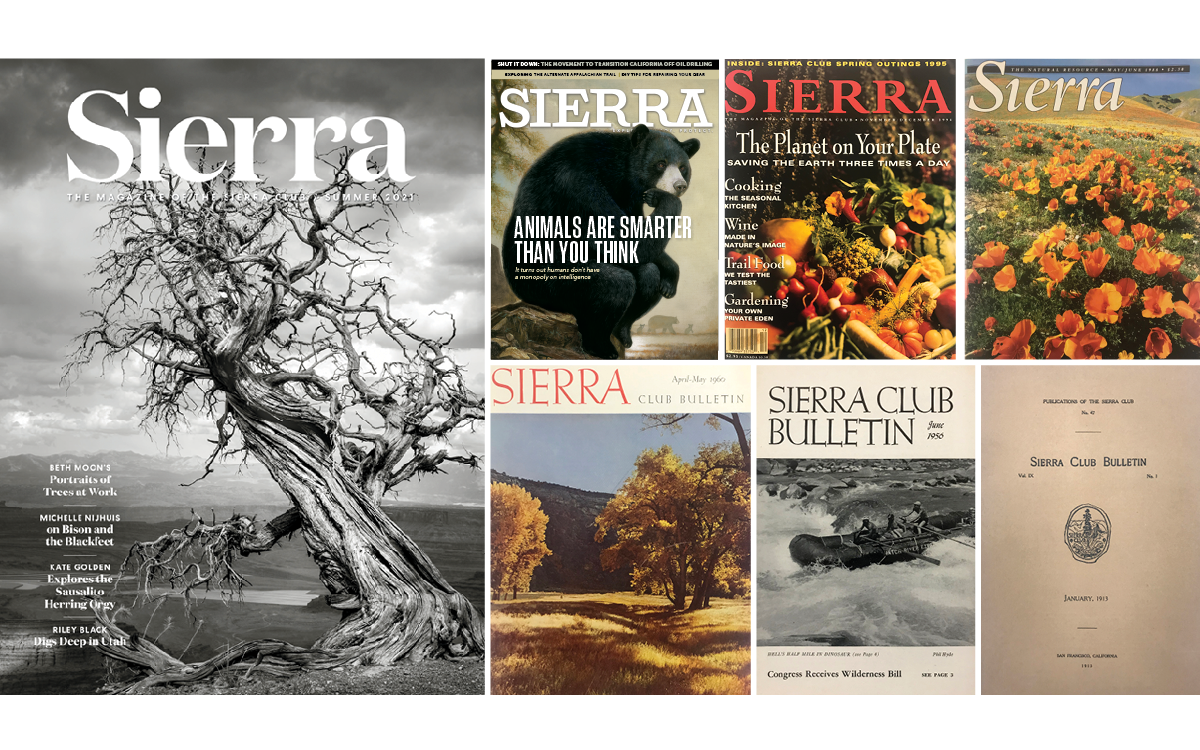Introducing the Latest Evolution of Sierra
We have a whole new look

Publishing has always been in the Sierra Club's DNA. We lost count along the way, but there have been at least 15 distinct iterations of this magazine since its founding 128 years ago. The most recent version is in your hands or—if you're one of our digital-only subscribers—on your screen.
During its first decades, the Sierra Club Bulletin was mostly a mountaineers' journal. Its pages were full of alpine travelogues, tales of first ascents of American peaks, and scientific articles on flora, fauna, and geology. Rollicking stories about the annual High Trips to the Sierra Nevada were common, like a 1930s piece by a then-little-known photographer named Ansel Adams, who marveled that "contact with fundamental earthy things gave a startling perspective."
As the interests of the Sierra Club broadened and deepened in the mid-20th century, the Bulletin evolved too. It was among the first magazines to publish four-color photography, as it used lush images by artists such as Eliot Porter to invigorate the movement to halt dams in Dinosaur National Monument and Grand Canyon National Park. The publication started to swing at big issues—a 1967 essay was titled "Historical Roots of Our Ecological Crisis." The magazine became a home for writers. A New York Times drama critic, Brooks Atkinson, wrote a recurring column of wry nature observations ("I am happy with the inefficient enclave of the New York Forest Preserve"), and Loren Eiseley, a regular contributor, penned an appreciation of poet Robinson Jeffers ("the sea-beaten coast, the fierce freedom of its hunting hawks, possessed and spoke through him"). In the 1970s, an era of dubious aesthetic tastes, Sierra was a backpackers' mag—the Outside of its day, before Outside existed.
Now, the evolution continues.
Those of you who are used to the glossy bimonthly we've published for decades will experience big changes. We've ditched the conventional magazine structure (tidbits at the front, features in the middle, tidbits at the back) for a deconstructed format that sprinkles recurring departments throughout—a design that reflects the way most of us consume media in the internet age. With our Notes From Here & There department, we're recommitting to storytelling from the front lines of environmental activism and the edges of outdoor recreation. An expanded arts and letters section—Culture Desk—critiques how mass media and consumer culture intersect with environmental issues. A robust science section, Findings, investigates our miraculous natural world as well as the latest technologies for addressing the climate crisis and the extinction emergency. The Lookout is a return to the magazine's Forestry Notes of the 1890s and the Washington Report of the 1960s—a dashboard our activist member-readers can use to advance Sierra Club campaigns. For the first time in decades, poetry is returning to our pages, under the curation of poetry editor Aimee Nezhukumatathil (if you haven't read her book World of Wonders, find a copy stat).
While our format and frequency have changed, our focus remains largely the same. We'll keep searching for new ways to use words and images that spark a wonder for the natural world and fuel a passion for protecting it. We hope to experiment with original forms of 21st-century nature writing—blurring the lines between the wild and the human, celebrating nearby nature as much as remote wilderness, and revealing the intersections between social justice for people and ecological justice for the rest of life on Earth. We'll hitch a joy for the planet and a love for human communities to the courage of those who act to safeguard both.
Curiosity remains, as ever, the most important point on our editorial compass. It's exciting to think of where that curiosity may lead. Come explore with us.
This article appeared in the Summer quarterly edition with the headline "Back Toward the Future."
 The Magazine of The Sierra Club
The Magazine of The Sierra Club







